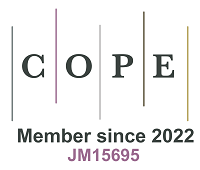A novel method on functional connectivity biomarkers: the potential of spatiotemporal graph convolutional network in identifying imaging biomarkers for Alzheimer’s disease
Abstract
The abnormal deposition of pathological proteins in Alzheimer’s disease (AD) can disrupt neural pathways in the brain. Functional magnetic resonance imaging (fMRI) is a valuable tool for detecting changes in brain connectivity caused by AD, offering significant support for early diagnosis. However, traditional numerical distribution methods often struggle to capture subtle lesions in fMRI images, limiting their diagnostic utility. The study discussed in this commentary introduces a spatiotemporal graph convolutional network (ST-GCN) framework that integrates both spatial and temporal dependencies in brain functional networks, providing a more robust approach to fMRI data analysis. This advancement significantly improves the identification of functional connectivity (FC) biomarkers for AD. This commentary critically evaluates the strengths and limitations of the proposed approach and outlines potential future research directions, particularly in the integration of multimodal neuroimaging data and further validation of the model across diverse clinical populations.
Keywords
Alzheimer’s disease (AD) is a complex condition characterized by progressive cognitive decline resulting from cumulative brain damage, ultimately leading to dementia[1,2]. The hallmark pathological features of AD include amyloid plaques, neurofibrillary tangles, and neurodegeneration[1,3]. Positron emission tomography (PET) imaging, cerebrospinal fluid (CSF), and plasma biomarkers are commonly used to detect AD pathologies[4]. For example, tau phosphorylated at threonine 217 (p-tau217), a core plasma biomarker specified in the revised criteria, may be associated with the amyloid-beta (Aβ) or AD tauopathy pathways. However, the invasive nature and high costs of these methods limit their widespread clinical implementation.
Recent advancements in resting-state functional magnetic resonance imaging (rs-fMRI) have provided valuable insights for clinical diagnosis[5]. This non-invasive technique enables the detection of subtle changes in brain function. A key advantage of rs-fMRI in AD is its ability to assess functional connectivity (FC) without requiring task performance, making it particularly suitable for dementia patients and easily integrated into routine clinical MRI sessions[6]. In fMRI analysis, brain functional networks are commonly used for feature extraction, with static and dynamic brain functional networks being the most commonly employed methods. Static brain functional networks focus exclusively on the strength of FC between brain regions, neglecting the temporal information inherent in fMRI. In contrast, dynamic brain functional network analysis employs a sliding window approach to capture the temporal dynamics of FC between brain regions[7]. However, this approach struggles to effectively integrate the spatiotemporal topological features of brain functional networks, limiting a comprehensive understanding of the complex dynamic patterns of brain FC.
In recent years, machine learning techniques have gained significant attention for their ability to extract meaningful biomarkers from complex brain networks[8]. Among these, graph neural networks (GNNs) have emerged as a powerful tool for modeling intricate, high-dimensional data, such as brain connectivity networks[9,10]. Traditional graph convolutional networks (GCNs) have been successfully applied to brain network analysis, focusing on spatial relationships between different brain regions[11]. However, these methods capture FC at a given time point and fail to account for the temporal evolution of brain activity - an essential aspect when working with dynamic data such as fMRI. To address this limitation, the study introduces a spatiotemporal graph convolutional network (ST-GCN) combined with the gradient-based class activation mapping (Grad-CAM) model (STGC-GCAM) to extract disease-related imaging biomarkers. The framework leverages ST-GCN to capture both temporal and spatial topological information within the data channels, while the Grad-CAM module extracts critical node information from the graph, effectively characterizing the brain regions impacted by the disease. The effectiveness of the approach was verified on a multi-center dataset.
The results demonstrate that the STGC-GCAM effectively captures both spatial and temporal dependencies in brain functional networks, offering a more comprehensive view of brain functional network dynamics. When applied to data from six sites, the STGC-GCAM achieved optimal performance, with the following accuracies: CN vs. MCI = 0.93 ± 0.001, CN vs. AD = 0.90 ± 0.002, MCI vs. AD = 0.92 ± 0.002, and sMCI vs. pMCI = 0.85 ± 0.002. However, performance declined when data from a single site were used. Additionally, Grad-CAM identified brain regions with significantly altered connectivity patterns in AD, primarily within the default mode network (DMN), visual network, and sensorimotor network. Post hoc analysis revealed that features from these regions were significantly correlated with cognitive levels (P < 0.05) and could predict the outcome of mild cognitive impairment (MCI) (hazard ratio = 3.885, P < 0.001). The topological features of these regions also mediated the relationship between Aβ deposition, brain glucose metabolism, and cognitive levels [mini-mental state examination (MMSE): β = -0.01, P < 0.001; the sum of boxes of clinical dementia rating scale (CDR-SB): β = 0.02, P < 0.001]. Furthermore, the model demonstrated strong generalization across a multi-center dataset, further confirming the reliability of the results.
When evaluating the classification performance of STGC-GCAM across multiple sites, inconsistencies in data parameters were observed across sites. To address the issue, the study applied the ComBat method for batch correction[12], which improved performance on multi-site data compared to single-site data. The performance of single-site models may be compromised due to data mismatches or limited data availability. Compared with six other methods, namely support vector machine (SVM), multilayer perceptron (MLP), random forest (RF), logistic regression (LR), BrainCNN[8], and GCN, STGC-GCAM achieved the best performance. Furthermore, compared to traditional metrics such as regional homogeneity (ReHo) and amplitude of low-frequency fluctuation (ALFF), the topological feature-based model demonstrated superior predictive capability. The findings are consistent with previous research, such as Petrella et al.’s discovery of reduced FC in the DMN of AD patients, which is associated with memory impairment, one of the most common early symptoms of AD[13,14]. Additionally, Millar et al.’s study suggested that abnormal FC is associated with the extent of Aβ pathology but not tau pathology, implying that Aβ pathology is the primary cause of FC changes in early AD[15]. In conclusion, while the current findings align with previous studies, the complexity and unknowns of the human brain emphasize the need for further research to fully reveal the pathological mechanisms of AD.
Although this study proposes a novel method for extracting AD imaging biomarkers and validates its effectiveness on a multi-center dataset, it still has limitations. First, the limited diversity of the samples restricts the generalizability of the results. Future research should focus on enhancing data collection to improve the broader applicability of the findings. Second, this study primarily examines specific brain regions affected by AD, without exploring the connectivity patterns between these regions. Consequently, future studies should further investigate the dynamic changes in FC during the progression of AD to identify more effective imaging biomarkers. Additionally, this study analyzes only resting-state brain functional networks; future work could integrate other types of brain networks or imaging modalities to provide a more comprehensive understanding of the pathological mechanisms of AD. Despite these limitations, the significance of this study remains intact. In fact, these limitations highlight the need for further research to provide a more complete understanding of AD’s pathological information.
The results of this study are highly significant for AD research, with the proposed STGC-GCAM offering a new approach to extracting AD functional imaging biomarkers. The imaging biomarkers identified in this study have important implications for the early detection and diagnosis of AD. Future research, such as investigating changes in the brain functional circuits in AD, will be crucial for developing effective treatments. Overall, the findings of this study, along with future research directions, not only provide a deeper understanding of the pathogenesis of AD but also offer important theoretical support for developing new treatment strategies and improving the quality of life for AD patients.
DECLARATIONS
Authors’ contributions
Wrote the first draft of the commentary: Zhang Y
Edited and contributed to the final draft: Jiang J
Availability of data and materials
Not applicable.
Financial support and sponsorship
This work was supported by the Science and Technology Innovation 2030 Major Projects (2022ZD0211606) and the National Natural Science Foundation of China (No. 62376150).
Conflicts of interest
Both authors declared that there are no conflicts of interest.
Ethical approval and consent to participate
Not applicable.
Consent for publication
Not applicable.
Copyright
© The Author(s) 2025.
REFERENCES
1. Yu M, Sporns O, Saykin AJ. The human connectome in Alzheimer disease - relationship to biomarkers and genetics. Nat Rev Neurol. 2021;17:545-63.
2. Alorf A, Khan MUG. Multi-label classification of Alzheimer’s disease stages from resting-state fMRI-based correlation connectivity data and deep learning. Comput Biol Med. 2022;151:106240.
3. Ismail Z, Creese B, Aarsland D, et al. Psychosis in Alzheimer disease - mechanisms, genetics and therapeutic opportunities. Nat Rev Neurol. 2022;18:131-44.
4. Jack CR Jr, Andrews JS, Beach TG, et al. Revised criteria for diagnosis and staging of Alzheimer’s disease: Alzheimer’s Association Workgroup. Alzheimers Dement. 2024;20:5143-69.
5. Frontzkowski L, Ewers M, Brendel M, et al. Earlier Alzheimer’s disease onset is associated with tau pathology in brain hub regions and facilitated tau spreading. Nat Commun. 2022;13:4899.
6. Hoyer R, Laureys S. The interest and usefulness of resting state fMRI in brain connectivity research. Brain Connect. 2024;14:354-6.
7. Yang F, Jiang X, Yue F, et al. Exploring dynamic functional connectivity alterations in the preclinical stage of Alzheimer’s disease: an exploratory study from SILCODE. J Neural Eng. 2022;19:016036.
8. Kawahara J, Brown CJ, Miller SP, et al. BrainNetCNN: convolutional neural networks for brain networks; towards predicting neurodevelopment. Neuroimage. 2017;146:1038-49.
9. Song X, Zhou F, Frangi AF, et al. Graph convolution network with similarity awareness and adaptive calibration for disease-induced deterioration prediction. Med Image Anal. 2021;69:101947.
10. Qu Z, Yao T, Liu X, Wang G. A graph convolutional network based on univariate neurodegeneration biomarker for Alzheimer’s disease diagnosis. IEEE J Transl Eng Health Med. 2023;11:405-16.
11. Gadgil S, Zhao Q, Pfefferbaum A, Sullivan EV, Adeli E, Pohl KM. Spatio-temporal graph convolution for resting-state fMRI analysis. In: Martel AL, Abolmaesumi P, Stoyanov D, Mateus D, Zuluaga MA, Zhou SK, Racoceanu D, Joskowicz L, editors. Medical Image Computing and Computer Assisted Intervention - MICCAI 2020. Cham: Springer International Publishing; 2020. pp. 528-38.
12. Johnson WE, Li C, Rabinovic A. Adjusting batch effects in microarray expression data using empirical Bayes methods. Biostatistics. 2007;8:118-27.
13. Petrella JR, Sheldon FC, Prince SE, Calhoun VD, Doraiswamy PM. Default mode network connectivity in stable vs progressive mild cognitive impairment. Neurology. 2011;76:511-7.
14. Fredericks CA, Sturm VE, Brown JA, et al. Early affective changes and increased connectivity in preclinical Alzheimer’s disease. Alzheimers Dement. 2018;10:471-9.
Cite This Article
How to Cite
Download Citation
Export Citation File:
Type of Import
Tips on Downloading Citation
Citation Manager File Format
Type of Import
Direct Import: When the Direct Import option is selected (the default state), a dialogue box will give you the option to Save or Open the downloaded citation data. Choosing Open will either launch your citation manager or give you a choice of applications with which to use the metadata. The Save option saves the file locally for later use.
Indirect Import: When the Indirect Import option is selected, the metadata is displayed and may be copied and pasted as needed.
About This Article
Special Issue
Copyright
Data & Comments
Data

















Comments
Comments must be written in English. Spam, offensive content, impersonation, and private information will not be permitted. If any comment is reported and identified as inappropriate content by OAE staff, the comment will be removed without notice. If you have any queries or need any help, please contact us at [email protected].